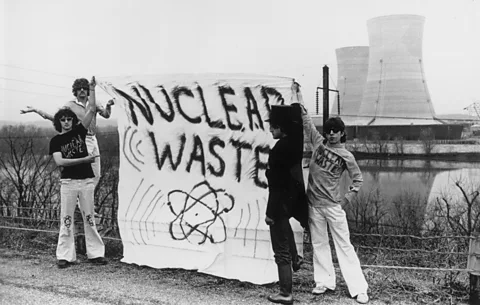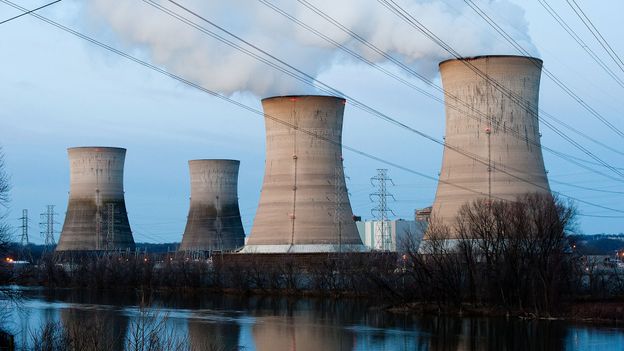A report released in April by the International Energy Agency noted that the power demand from data centres, which currently account for around 1.5% of the world’s electricity consumption, could double in the next five years. Beyond that, there’s huge uncertainty – both in the amount of future demand and what sources might rise to meet it.
Nuclear reactors, Raza and other experts say, may have a role in meeting the AI energy crunch, but only years into the future – and only if the industry can convince an often-sceptical public.
 Keystone/ Hulton Archive/ Getty ImagesThe Three Mile Island meltdown affected the reputation of nuclear energy in the US for decades (Credit: Keystone/ Hulton Archive/ Getty Images)
Keystone/ Hulton Archive/ Getty ImagesThe Three Mile Island meltdown affected the reputation of nuclear energy in the US for decades (Credit: Keystone/ Hulton Archive/ Getty Images)
In March, the small suburb of North Tonawanda, halfway between Niagara Falls and the rust-belt city of Buffalo in Western New York state, took what to outsiders looked like a fairly drastic step – banning nuclear power generation within its borders.
The law was a direct reaction to anger over a proposal floated by a local tech company to build a small reactor for cryptocurrency mining. Deb Gondek, a local activist who prior to retirement had worked as director of sustainability for a food company based in the area, said that many residents were wary of the proposal because they’d already been upset by the noise of the crypto mining operation.


